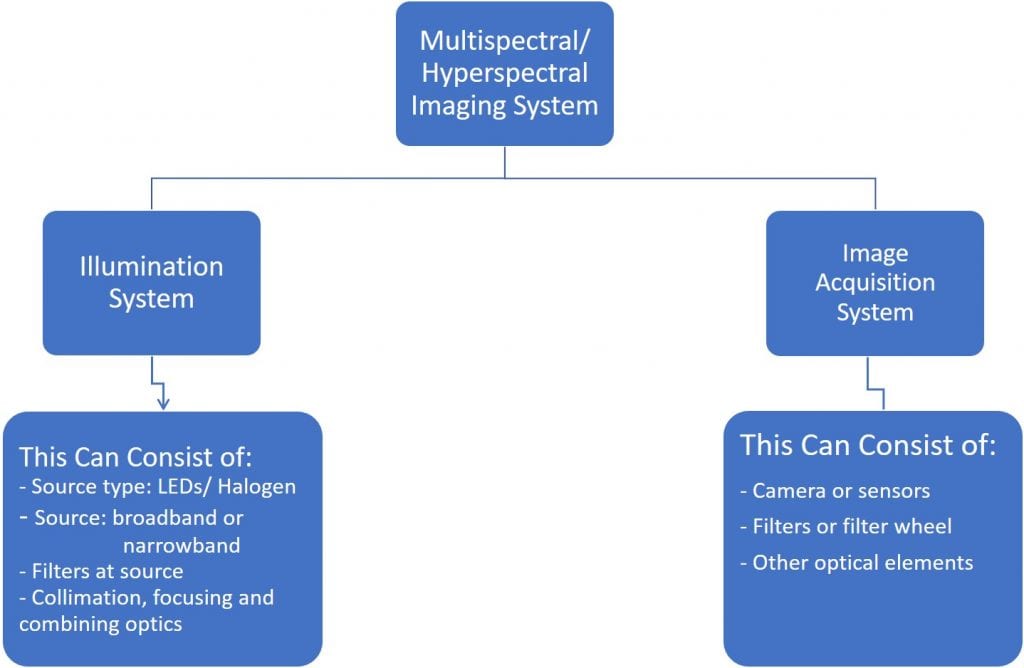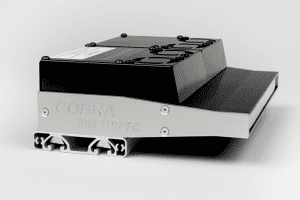Multispectral and hyperspectral imaging techniques are growing in prominence in recent years as new applications have emerged and the cost of the technology has reduced. In this blog post we will explore what multispectral and hyperspectral imaging is, as well as provide a definition for each, and then discuss some key applications, the requirements for a multispectral or hyperspectral imaging system, and the advantages of using LEDs and LED selection criteria.
What is Multispectral and Hyperspectral Imaging?
Multispectral and hyperspectral imaging provides the capability to image a target in ways that are otherwise invisible to the naked eye. This technique allows for differences in objects that appear similar to be easily detected. For example, in apple sorting, differing levels of ripeness can be identified with hyperspectral imaging, providing early quality detection and optimal sorting and grading.

What is the Difference Between Multispectral and Hyperspectral Techniques?
There are currently no strict definitions on the exact differences between multispectral and hyperspectral imaging. Most agree the main difference between the two techniques is the number of detection bands from which the image is composed. Hyperspectral imaging has a significantly higher number of detection bands than multispectral imaging. Filtering is usually used in multispectral imaging with a common RGB-IR illumination system having 4 detection bands. In hyperspectral imaging, a dispersive element such as a prism or grating can be used to spread light across a sensor array resulting in hundreds of detection bands.
Key Applications
Multispectral and hyperspectral imaging techniques are good for applications where vast amounts of spectral data are required to determine the exact nature of the material. Some examples of applications where this technique provides an advantage are:
- Food Sorting
- Print Inspection
- Sorting of Recyclable Material
- Currency Inspection
Requirements for a Multispectral or Hyperspectral System
Any multispectral or hyperspectral imaging system consists of 4 elements (Figure 1 below):
- Illumination system: light source which has traditionally been mercury or halogen, but LEDs have been gaining market acceptance (see the Advantage of LEDs section below).
- Target: can be a wide variety of items that look similar to the naked eye, but have varying molecular compositions.
- Image acquisition system: usually a monochromatic camera combined with a filter array, a monochromatic camera with a filter wheel, or a temporal multiplexing or a CCD or CMOS sensor in a line scan application.
- Data analysis: software and image processing that allows for images to show the appropriate differentiation.

Figure 1: Elements of a multispectral or hyperspectral imaging system
Advantages of LEDs
Mercury and halogen lamps have traditionally been used in multispectral and hyperspectral applications due to the nature of their broad spectrum. Advancements in LED technology make it possible to provide broadband illumination using various combinations of LEDs of varying wavelengths.
One advantage of using LEDs is the ability to boost specific spectrum where needed. This is useful in applications where there is a high sensitivity camera and the illumination system must compensate for any shortcomings or in an application where the lamp is required to match a specific spectral profile.
Another advantage of LEDs in comparison to halogen or mercury lamps is significantly longer lifetimes. LEDs have average lifetimes of tens of thousands of hours, as opposed to the average lifetimes of mercury and halogens which are only several thousand hours.
LED Selection Considerations
There are four factors to consider when selecting the appropriate LED light for a multispectral or hyperspectral application:
- Physical: The size selected will affect the array density which in turn will impact the light output and optics selection.
- Electrical: There are a number of different current and voltage options as well as polarities, for the variety of LEDs, that require robust and flexible driver design.
- Optical: Different optical selections can impact output efficiencies, bandwidth and peak wavelength characteristics.
- Lifetime Characteristics: The specific wavelength of an LED and the demands place on that LED will determine the lifetime range as they can vary significantly between wavelengths.
ProPhotonix COBRA MultiSpec

ProPhotonix has over 25 years of expertise in designing LED illumination. Our COBRA MultiSpec is configurable for both multispectral and hyperspectral imaging. It can be stacked up to 5m in increments of 100mm modules. It offers discrete control of up to 12 wavelengths from 365-1700nm.
For more information on Illumination in Multispectral and Hyperspectral Imaging, download the whitepaper. If you have any questions on the COBRA MultiSpec or questions on your specific application, please contact us for more information.
ProPhotonix is a leading designer and manufacturer of Laser Diodes, Laser Modules, UV LED Curing Systems, LED Products, and UVC LED Disinfection Systems. Contact us for free expert advice on selecting the optimal solution for your system.






